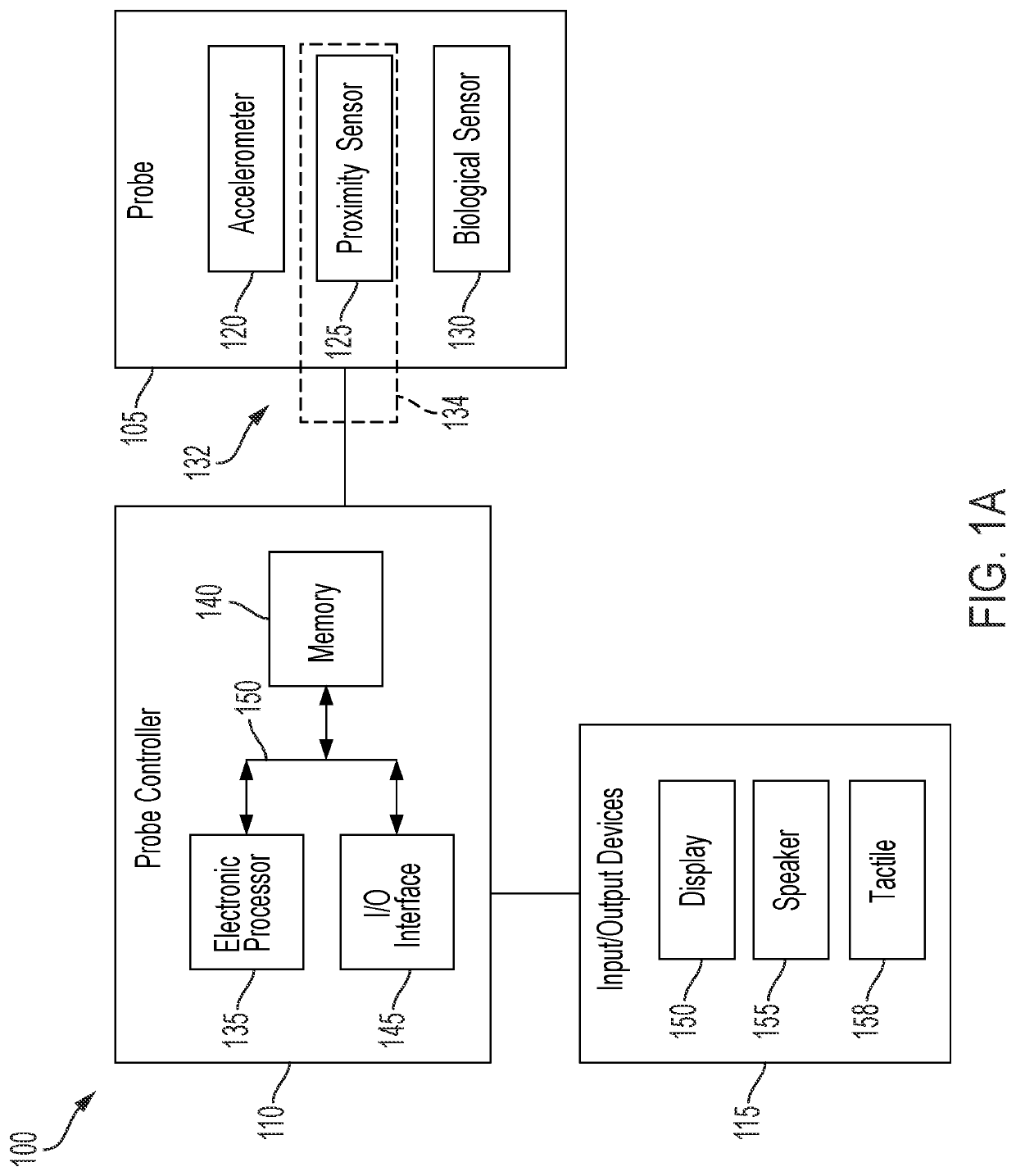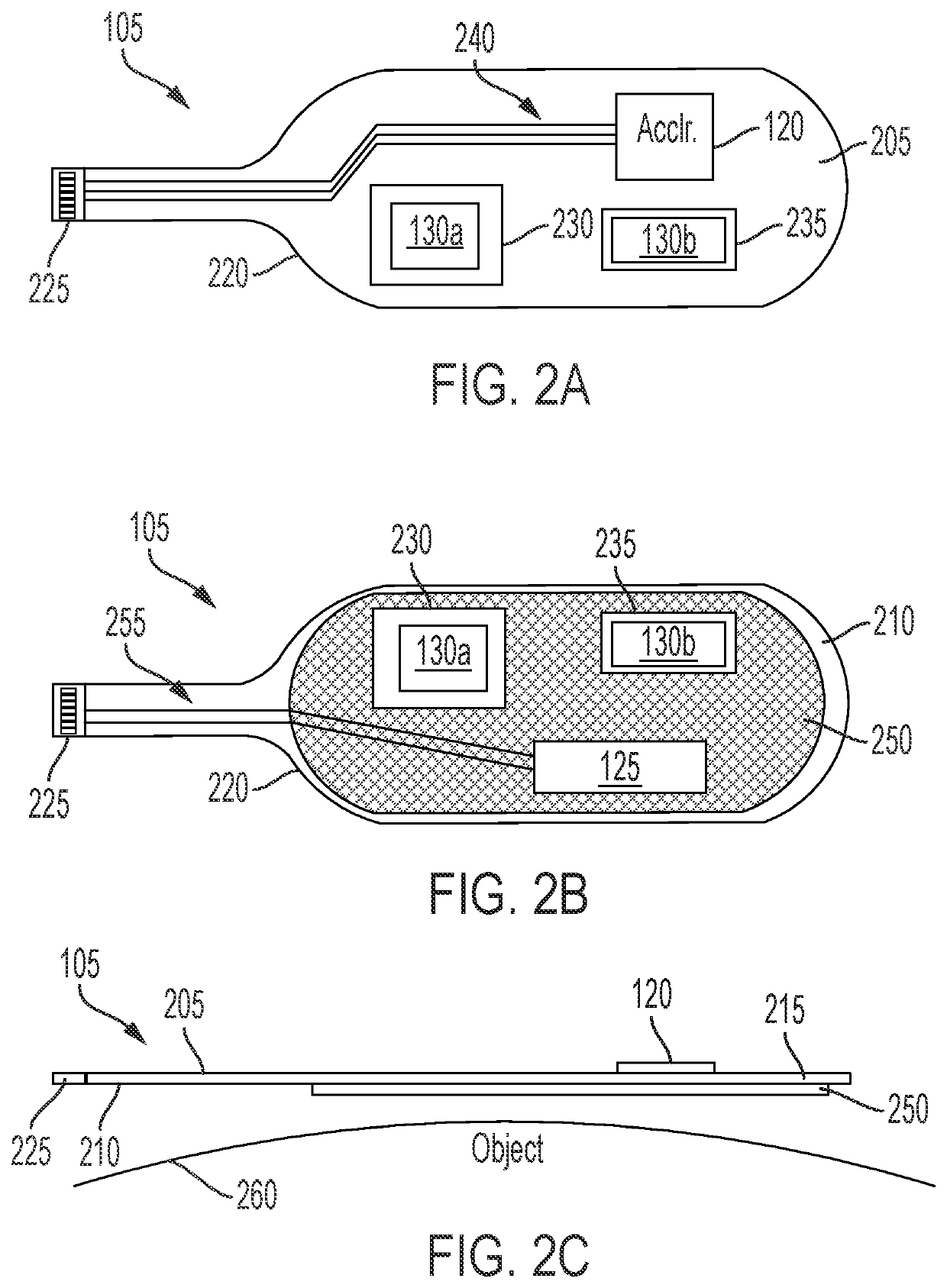Proximity detection for assessing sensing probe attachment state
a sensing probe and state technology, applied in the field ofproximity detection for assessing the attachment state of the sensing probe, can solve the problems of sensing errors, difficult or time-consuming detection, sensor detachment (partially or fully) from the skin of the subject, etc., and achieve the effects of age, muscular control, or temperament of the subj
- Summary
- Abstract
- Description
- Claims
- Application Information
AI Technical Summary
Benefits of technology
Problems solved by technology
Method used
Image
Examples
Embodiment Construction
[0025]One or more embodiments are described and illustrated in the following description and accompanying drawings. These embodiments are not limited to the specific details provided herein and may be modified in various ways. Furthermore, other embodiments may exist that are not described herein. Also, functions performed by multiple components may be consolidated and performed by a single component. Similarly, the functions described herein as being performed by one component may be performed by multiple components in a distributed manner. Additionally, a component described as performing particular functionality may also perform additional functionality not described herein. For example, a device or structure that is “configured” in a certain way is configured in at least that way, but may also be configured in ways that are not listed.
[0026]As used in the present application, “non-transitory computer-readable medium” comprises all computer-readable media but does not consist of ...
PUM
 Login to View More
Login to View More Abstract
Description
Claims
Application Information
 Login to View More
Login to View More - R&D
- Intellectual Property
- Life Sciences
- Materials
- Tech Scout
- Unparalleled Data Quality
- Higher Quality Content
- 60% Fewer Hallucinations
Browse by: Latest US Patents, China's latest patents, Technical Efficacy Thesaurus, Application Domain, Technology Topic, Popular Technical Reports.
© 2025 PatSnap. All rights reserved.Legal|Privacy policy|Modern Slavery Act Transparency Statement|Sitemap|About US| Contact US: help@patsnap.com



